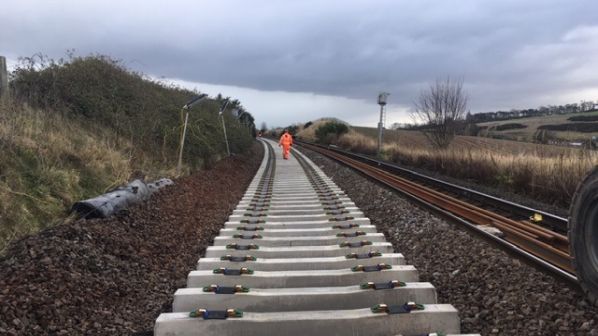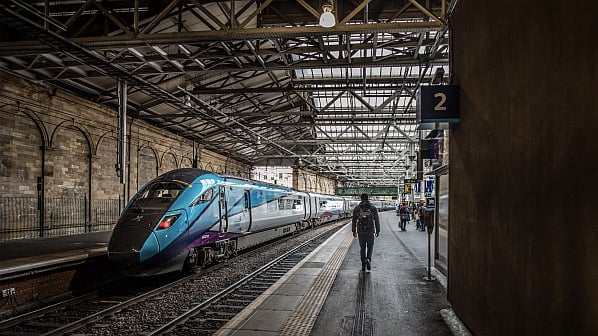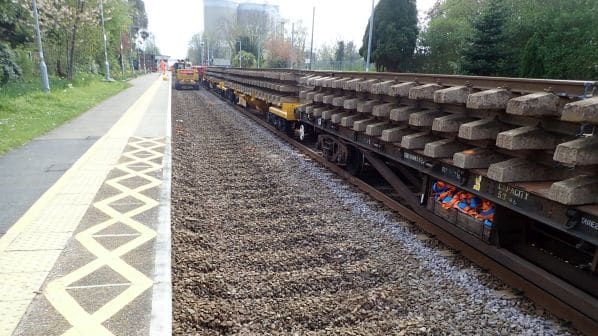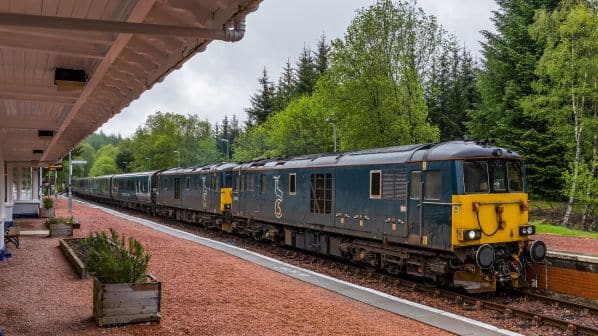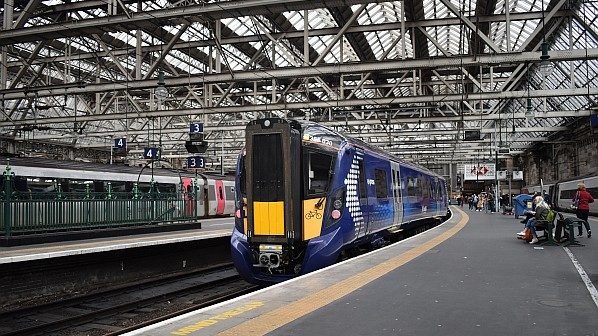NETWORK Rail (NR) Scotland has published its £4.2bn, five-year spending plan for Control Period 7 (CP7) between 2024 and 2029, which includes major investment in infrastructure renewals as well as efforts to tackle climate change, make better use of technology, improve train performance and grow passenger and freight traffics.
NR has produced the plan in response to the High-Level Output Statement (HLOS) and Statement of Funds Available (SoFA) published by the Scottish government in February detailing what it wants NR’s Scottish region, Scotland’s railway, to deliver and how much funding will be made available to make that happen. Funding for enhancements to the network is not included in this settlement, but NR says that it will continue to deliver a greener railway and support the government’s net zero ambitions.
NR says that spending in CP7 will improve network resilience to extreme weather while aiming to ensure that train punctuality improves.
The plan also includes a focus on improving safety, after a railway worker was killed in an accident in Glasgow and three people were killed in a train accident at Carmont during CP6. More than £1.9bn will be invested in renewals to drive improvements in safety and reliability.
This includes continuing to deliver the level crossings risk control strategy, taking steps to reduce suicide and trespass, and tackling the causes of serious events that impact the infrastructure.
NR will also continue to focus on ways to reduce train accident risk through:
- targeted passenger and public safety improvements, including better level crossing and boundary fencing to reduce trespass, fatalities, and incursions on the line
- continued deployment of remote failure detection technology on earth structures
- investment in continuous real-time weather monitoring
- imposing speed restrictions to mitigate safety risk during extreme weather
- increased investment in drainage assets and vegetation management
- workforce safety improvements including maintenance scheduling and more intelligent infrastructure, and
- additional protection of line blockades and greater use of technology to reduce the risk of workforce accidents due to on-track machine and train movements.
The plan includes measures to reduce the cost of railway operation, and NR says neither passengers nor taxpayers should be expected to fill the revenue gap experienced following the Covid-19 pandemic.
The HLOS requires NR in Scotland to take all reasonable steps to work with operators to secure year-on-year growth in passenger numbers and, consequently, revenue, but also makes it clear that operators should take similar steps to improve service quality and revenue protection, especially at the major stations such as Glasgow Central and Edinburgh Waverley.
NR says the growth objective means it must work harder with operators to build confidence in the railway across several areas, including:
- demonstrating to passengers that rail is the safest and most convenient way to travel
- improving journey times where possible, and having a strong performance regime that ensures train punctuality
- reducing rail’s carbon footprint, reinforcing its position as the most environmentally sustainable mode for passengers and freight, and
- delivering value for money for passengers, freight customers and the taxpayer.
NR says that as the railway is heavily subsidised, there is also a need to focus on reducing net cost, either by directly reducing costs or investing where it will generate greater revenue.
While rail is already the greenest form of mass transport, NR says it will work in partnership with Scottish Rail Holdings, passenger operator ScotRail and other external stakeholders to make it even more sustainable, contributing to wider Scottish Government objectives.
Climate change is also increasing the frequency and severity of extreme and adverse weather events, leading to increasing risk for rail assets, with repercussions for operations, performance, and the level of unplanned disruptive works on the network. As well as delivering key short-term climate resilience benefits for the railway through asset renewals, NR has committed to producing a longer-term climate change adaptation strategy for the railway, using the adaptation pathways approach, and transforming its approach to assessing climate risk.
NR’s spending plan for Scotland focuses on an affordability-driven approach to renewals expenditure in CP7. NR says it recognises that there will be an impact on overall asset condition as it transitions its workbank mix from more full renewals to a blend of renewals and life extending interventions, and says it plans to deliver more maintenance work in CP7 to mitigate this impact as much as possible.
The HLOS requires NR to enable ScotRail to operate 92.5% of services on time, with special dispensation given for services that are delayed due to severe weather or to allow connections with other late-running trains or ferries.
However, NR says on-time performance in CP6 is currently 89.8%, which will make it extremely difficult to meet the new target in the first three years of CP7.
“The scale of this challenge should not be underestimated and requires a whole-system approach to performance to be successful, notwithstanding the external challenges that we face, particularly if climate change and extreme weather continue to outpace available investment,” the plan says. “Earlier delivery of the performance target would require urgent, sustained and significant investment in the ScotRail rolling stock fleet.”
The HLOS also requires NR to enable Caledonian Sleeper to meet its targets in CP7, and to ensure that the network provides capability so that freight cancellations and lateness (FCaL), a new measure introduced for CP7, is no higher than 5.5%. The plan includes a target to continue to grow rail freight traffic through an “ambitious but realistic target” of 8.7% growth.
Under the plan, NR will also continue with work on the Levenmouth rail link, which will extend rail’s economic, leisure and tourism benefits.
“We’re delighted by the Scottish government’s continued support for the railway,” says NR Scotland’s route director, Mr Liam Sumpter. “Over the next five years, we’ll work hard to provide a safe, greener and more reliable railway for Scotland. Our plan is ambitious and focuses on the needs of our customers while reflecting the necessity to deliver greater value for taxpayer money. We’re committed to delivering a railway that people can rely on and supports the social and economic growth of the nation.”
The Office of Rail and Road (ORR) is set to deliver its final determination on NR’s delivery and funding for CP7 by October 31.
